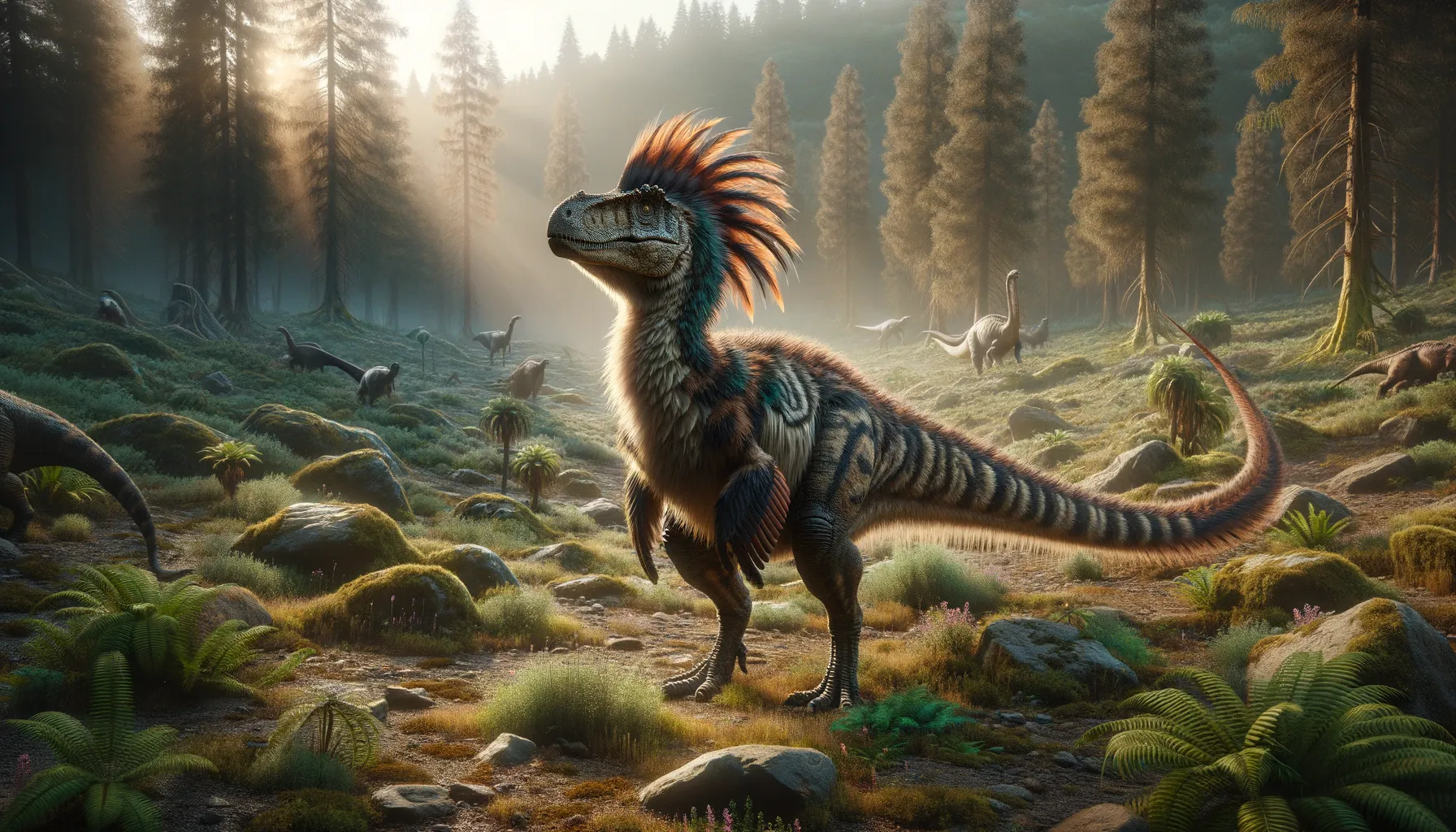
Nemegtomaia
The feathered crested wonder of Cretaceous plains!
Period
Cretaceous
Length
Approximately 2 meters long.
Height
Around 2 meters tall.
Weight
Approximately 500 kilograms.
Nemegtomaia was a small theropod dinosaur that lived during the Late Cretaceous period. Known for its distinctive skull with a crest, this dinosaur was part of the Oviraptoridae family. It was a feathered dinosaur that primarily lived in what is present-day Mongolia. Nemegtomaia is a fine example of the diverse range of dinosaurs that thrived in the Cretaceous period, particularly in the rich fossil beds of the Nemegt Formation.
Diet
Nemegtomaia likely had an omnivorous diet, feeding on plants, small animals, and eggs. Its beak-shaped jaws suggest that it could have been adept at foraging for a variety of food types.
Hunting
Nemegtomaia was not a predator as we might imagine with larger theropods. Instead, it may have scavenged or fed on small vertebrates and invertebrates, using its beak to pick food from the ground.
Environmental challenges
Living in the arid regions of what is now Mongolia, Nemegtomaia faced challenges such as limited water sources and extreme temperatures. These conditions may have influenced its behavior and diet, leading it to adapt to various available food sources. The presence of other, possibly competitive, species would have further influenced its survival strategies.
Speed
Likely slow-moving due to its size.
Lifespan
Similar to other theropods, estimated around 20 to 30 years.
First discovery
Discovered in the Nemegt Formation in Mongolia in 2004.
Fun Facts
- Nemegtomaia belonged to a family of dinosaurs with a beak-like snout, making them resemble modern birds.
- This dinosaur lived about 70 million years ago during the Late Cretaceous period in what is now Mongolia.
- Nemegtomaia was a feathered dinosaur, which helped scientists understand the evolution of feathers in the dinosaur-bird lineage.
- It was a relatively small dinosaur, estimated to be about the size of a large turkey.
- Nemegtomaia is thought to have been an omnivore, eating both plants and small animals, similar to modern omnivorous birds.
- The name 'Nemegtomaia' means 'Nemegt mother', after the Nemegt Basin in Mongolia where it was first discovered.
- Fossils of Nemegtomaia were first found in the 1990s, but it wasn't officially named until 2004.
Growth and Development
Like many other theropods, Nemegtomaia likely exhibited relatively fast growth rates during its juvenile stages, enabling it to quickly reach a size that reduced predation risks. The growth process might have been tied to seasonal changes, with periods of rapid development occurring during times of resource abundance.
Habitat
Nemegtomaia lived in a semi-arid environment that featured rivers, lakes, and floodplains. The presence of diverse plant life, including ferns and conifers, provided ample food resources. Its habitat was home to a variety of other dinosaur species, both predators, and herbivores, shaping a dynamic ecosystem.
Interaction with other species
Nemegtomaia likely coexisted with other oviraptorid species. Its interaction with other species would have included competition for resources and, potentially, social behaviors seen in related species. Predators of the time posed constant threats, affecting its behaviors and strategies.
Natural lifespan
Nemegtomaia lived for approximately 20 to 30 years.
Reproduction
Nemegtomaia likely laid eggs in nests, as suggested by its phylogenetic relatives. Parental care may have been part of its reproductive behavior, where adults protected and possibly fed their young until they could fend for themselves.
Social behaviour
This dinosaur could have exhibited some level of social behavior, possibly forming small groups or family units, especially during nesting and feeding times. Such social structures would have been beneficial for protection and resource sharing.
Fossil locations
The majority of Nemegtomaia fossils have been found in the Nemegt Basin of Mongolia, a site renowned for its rich dinosaur fauna. This area has provided significant insights into the diversity of late Cretaceous dinosaurs and their ecosystems.
